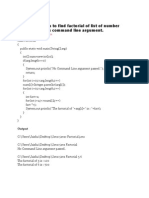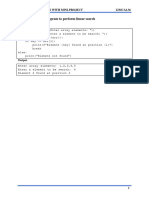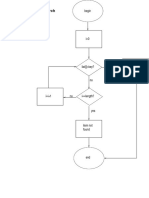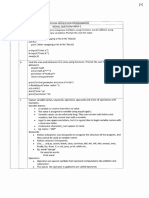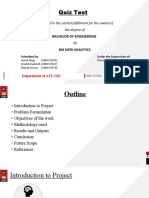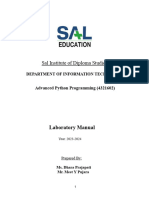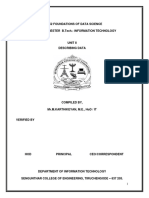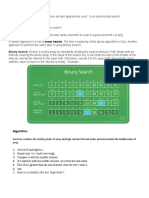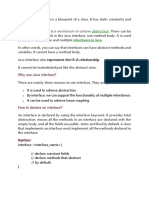0% found this document useful (0 votes)
501 views22 pagesPython Manual
The document describes a Python programming laboratory covering various Python fundamentals and concepts. It includes several programs and their code implementations to demonstrate:
1. Finding the average of best two test marks out of three and checking if a number is a palindrome.
2. Creating functions to calculate Fibonacci numbers and convert between binary, octal and hexadecimal.
3. Analyzing strings by counting characters and calculating string similarity.
4. Using different data structures like lists, tuples and dictionaries to implement sorting algorithms and convert between roman numerals and integers.
5. Pattern recognition with and without regular expressions to validate phone numbers and extract them from files along with email addresses.
6. Reading, writing and
Uploaded by
D.SameerCopyright
© © All Rights Reserved
We take content rights seriously. If you suspect this is your content, claim it here.
Available Formats
Download as PDF, TXT or read online on Scribd
0% found this document useful (0 votes)
501 views22 pagesPython Manual
The document describes a Python programming laboratory covering various Python fundamentals and concepts. It includes several programs and their code implementations to demonstrate:
1. Finding the average of best two test marks out of three and checking if a number is a palindrome.
2. Creating functions to calculate Fibonacci numbers and convert between binary, octal and hexadecimal.
3. Analyzing strings by counting characters and calculating string similarity.
4. Using different data structures like lists, tuples and dictionaries to implement sorting algorithms and convert between roman numerals and integers.
5. Pattern recognition with and without regular expressions to validate phone numbers and extract them from files along with email addresses.
6. Reading, writing and
Uploaded by
D.SameerCopyright
© © All Rights Reserved
We take content rights seriously. If you suspect this is your content, claim it here.
Available Formats
Download as PDF, TXT or read online on Scribd
/ 22


